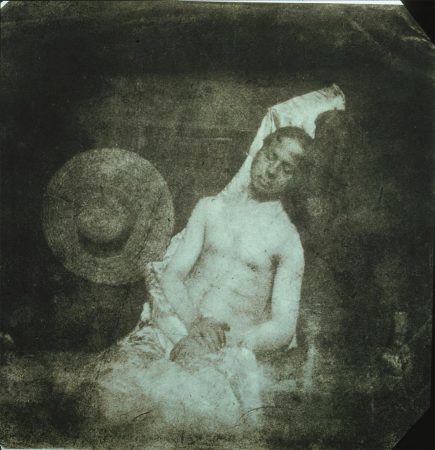We live in a time where nothing that you see that isn’t ‘real’ can be trusted. The accepted industry leader in post-production photographic software being Photoshop has been produced by Adobe since 1988. They have developed this tool to such a degree that it is impossible for the layman to distinguish what it real and what is ‘fake’. It is so good that even a complete novice could produce an image/piece of art, which to the casual observer would be to all intents & purpose a ‘genuine’ photograph. I have placed certain words in parenthesis because in this field of art, anything that is created, whether it be from something else, or as an amalgamation of numerous other parts, is still (not so) fundamentally original!
Adobe was by no means the first to alter images. This has been going on since, pretty much, the dawn of photography. It is now widely accepted that Hippolyte Bayard invented the process of photography as we know it today; Before even, Louis Jacques Mande Daguerre or William Henry Fox Talbot, who have historically been granted the ‘discoverers’ of photography.
Bayard’s father was a civil servant who had a particular passion for gardening. He expressed a particular interest in how the skin of a peach reacted chemically when exposed to the light of the sun. It is believed that this was possibly what fired the imagination of a young Bayard. As a result of watching and interacting with his father, Bayard invented ‘Direct Positive Photography’, this was in March 1839. This process produced images of significant quality, but sadly, ‘friends’ and timing conspired against him, and the plaudits fell to Daguerre & Fox Talbot.
In response, an understandably bitter Bayard produced his most famous image, Self-portrait of a drowned man. This became possibly the first manipulated image. Both the context and the narrative combine to add greater effect. I believe that either the body was bleached or the face and hands were darkened (within the photograph, not physically). This works in conjunction with the narrative that was hand written on the back of the photo;

The corpse which you see here is that of M. Bayard, inventor of the process that has just been shown to you. As far as I know this indefatigable experimenter has been occupied for about three years with his discovery. The Government which has been only too generous to Monsieur, Daguerre has said it can do nothing for Monsieur Bayard, and the poor wretch has drowned himself. Oh the vagaries of human life….! … He has been at the morgue for several days, and no-one has recognised or claimed him. Ladies and gentleman, you’d better pass along for fear of offending your sense of smell, for as you can observe, the face and hands of the gentleman are beginning to decay.
Another artist who took photographic art to a whole new level was the Swedish born but English resident, Oscar Gustave Rejlander. In 1857, a mere seventeen years after Bayard’s Drowned Man, he created the Photo montage Two ways of life. Composed of thirty two separate images, it took approximately six weeks to create & three days to construct as a print!
Two Ways of Life (1857) by Oscar Gustav Rejlander. Courtesy of The Royal Photographic Society Collection at the National Media Museum, Bradford, United Kingdom
About five years later, Rejlander moved on from the experimental phase of his life, and concentrated on quality portraiture, inspiring and aiding among others, Julia Margaret Cameron and Lewis Carroll.
Rejlander will be forever known as the father of art photography.
Oscar Gustave Rejlander born 1813, died 1875.
Check- Decoys & disruptions Martha Rosler.
Exercise
THE BRIDGWATER EXPRESS
THE CLASH DO CLASSIC
Nobody expects ‘normal’ when they go to see The Clash, but the final gig of their world tour left viewers agog (Not to mention dismayed). With the word out that base guitarist Paul Simonon would be playing his priceless Fender Stratovarius guitar, the crowd, to a man, turned up in evening wear as if going to see the London Philharmonic Orchestra at the Royal Albert Hall. It was an evening charged with emotion, with Joe Strummer playing for the last time at his local venue. The Palace in Bridgwater was packed to the rafters, and nobody left disappointed!
Opening with Vince Taylor’s 1959 song ‘Brand new Cadillac‘ the band banged out all of the classics with machine gun rapidity, barely stopping for a breath. The stirring classics were all there, ‘Clash City Rockers‘, ‘White Riot‘, ‘I fought the Law‘, ‘Tommy Gun‘, culminating in the anthemic ‘London Calling’.
Just as the crowd had reached a state of euphoric ecstasy, Simonon raised the priceless Strad. above his head, paused briefly, almost to savour the moment, then brought it down with a sickening crack onto the stage whereupon it splintered and and shattered into a less-than-priceless mess of Spruce, Willow & Maple. A deafening silence ensued, finally broken by a grinning Simonon announcing “Don’t worry, there’s another four out there….. Somewhere!” Afterwards he said to me “There were a few stunned faces out there, but I think they got it!”
As the final echo’s of the punk era reverberate around The Palace walls, we are left to contemplate the legacy that ‘The Clash’ will leave behind. If the end of ‘The Sex Pistols’ was a car crash, then this must surely have been the flight of Icarus.

RIP The Clash.
Original Photograph by Penny Smith.
Exercise
Learning log. Does digital technology change how we see photography as truth?